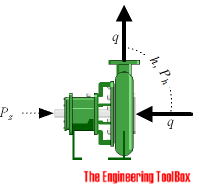Centrifugal Oil Purifiers - Starting and Stopping Procedures
We all know that centrifuges are an important type of auxiliary equipment on board ships and that they are classified into two operating functions.
One is Clarifier, which separates solids from liquids.
Other type is a Purifier, which separates liquids of different density.
The Purifier operates on the principle of separation by centrifugal force. But in order to optimize the purification process, certain parameters should be adjusted before purifier is started. Out of those parameters, very important parameters are...
1. Feed inlet oil temperature,
2. Density of Oil,
3. R.P.M of the rotating bowl,
4. Back Pressure,
5. Throughput of oil feed.
Insight Of the Parameters...!
1. Feed inlet oil temperature: Before entering the purifier, the dirty oil passes through the heater, which increases the temperature, thus reducing the viscosity of the oil to be purified. The lower the viscosity, the better will be the purification.
2. Density of Oil: As the dirty oil entering the purifier is heated to reduce the viscosity, the density also reduces. The lower the density, better the seperation.
3. R.P.M of the rotating bowl: If the purifier has not achieved full rpm(revolutions per second), then the centrifugal force will not be sufficient enough to aid the seperation.
4. Back Pressure: The back pressure should be adjusted after the purifier is started. The back pressure varies as the temperature, density, viscosity of feed oil inlet varies. The back pressure ensures that the oil paring disc is immersed in the clean oil on the way of pumping to the clean oil tank.
5. Throughput of oil feed: Throughput means the quantity of oil pumped into the purifier/hr. In order to optimize the purification, the throughput must be minimum.
Pre-checks before starting a Purifier...!
Before starting a Purifier, following checks are very essential:
1. If the Purifier is started after a overhaul, then check all fittings are fiited in right manner. The bowl frame hood locked with hinges.
2. Check the Oil level in the gear case. Ensure that it is exactly half in the sight glass. Also ensure the sight glass is in vertical position, as there is a common mistake of fixing it in horizontal position.
3. check the direction of rotation of the seperator, by just starting and stopping the purifier motor.
4. Check whether the brake is in released position.
Starting a Purifier...!
1. Ensure the lines are set and respective valves are open. Usually the lines are set from settling tank to service tank.
2. Start the purifier feed pump with the 3-way re-circulation valve in a position leading to settling tank.
3. Open the steam to the heater slightly ensuring the drains are open so that the condensate drains. close the drains once steam appears.
4. Start the Purifier.
5. Check for vibrations, check the gear case for noise and abnormal heating.
6. Note the current (amps) during starting. It goes high during starting and then when the purifier bowl
picks-up speed & when it reaches the rated speed, the current drawn drops to normal value.
7. Ensure the feed inlet temperature has reached optimum temperature for seperation as stated in the Bunker report & nomogram ( bunker delivery note gives the density of the fuel and using this we can get the seperation temperature and gravity disc size from the nomogram)
8. Now check whether the bowl has reached the rated speed by looking at the revolution counter. The revolution counter gives the scaled down speed of the bowl. The ratio for calculation can be obtained from the manual.
9. Now, after the bowl reaching the rated rpm, check for current attaining its normal value.
De-sludge procedure:
10. Open the Bowl closing water/Operating water, which closes the bowl. (Ensure sufficient water is present in the operating water tank)
11. Now after 10 seconds, open the sealing water to the bowl.
12. The sealing water should be kept open till the water comes out of the waste water outlet.
13. Once the water overflows throught the waste water outlet, stop the sealing water.
14. Now open the de-sludge water/bowl opening water. (this is done to ensure the bowl has closed properly). During de-sludge we can hear a characteristic sound by the opening of the bowl.
15. Repeat the steps 10, 11 ,12 & 13.
16. Open the 3-way re-circulation valve such that the dirty oil feed is fed into the purifier.
17. Wait for the back pressure to build up.
18. Check for overflowing of dirty-oil through waste water outlet & sludge port.
19. Now adjust the throughput to a value specified in the manual. Correspondingly adjust the back pressure too.
20. Now the purifier is put into operation. Change over the clean-oil filling valve to service tank.
After-checks & stopping of purifier...!
Checks after starting the purifier during regular watches:
1. Adjust the throughput, back pressure, temperature of feed inlet if necessary
2. gear case oil level, motor amps, general leakages, vibration have to be monitored
3. De-sludge every 2 hours for heavy oil purifiers & every 4 hours for lubricating oil purifiers.( refer manual or chief engineer instructions)
Stopping of Purifiers:
1. De-sludge the purifier after stopping the feed inlet.
2. shut down the steam inlet to the oil.
3. Stop the purifier after filling up the bowl with water.
4. Apply brakes and bring up the purifier to complete rest.
5. If any emergency, the purifiers has emergency stops, on pressing it, will stop the purifiers immediately shutting off the feed.









